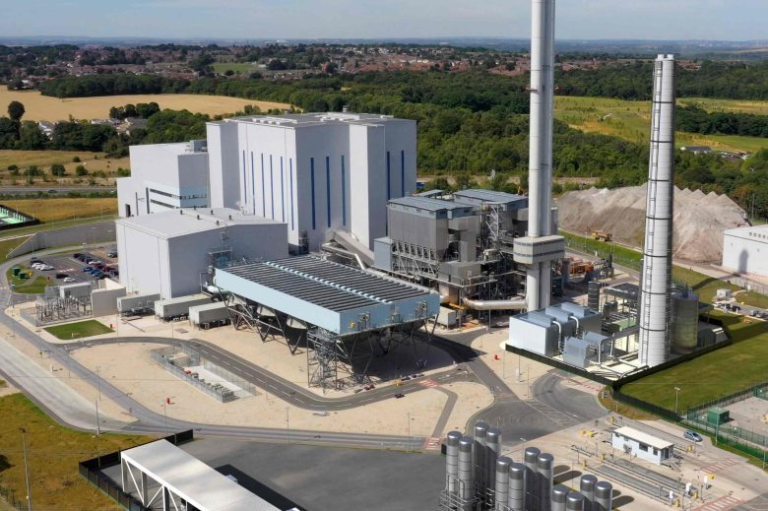In recent years, the UK construction industry has faced a major challenge: how to grow sustainably while drastically reducing its environmental footprint. Construction and demolition account for around 60% of total UK waste, and more than 35% of global CO₂ emissions are linked to the building sector. Clearly, something needs to change—and fast.
Enter the circular economy.
This model prioritises reuse, refurbishment, and recycling over the traditional “take-make-dispose” approach. It’s not a trend; it’s a transformation. UK developers are now turning toward circular principles to reduce not only waste but also carbon emissions across the entire lifecycle of a building.

Designing for Deconstruction: Planning With the End in Mind
A circular economy in construction starts well before a single foundation is laid. Forward-thinking developers are now designing buildings that can be disassembled, not just demolished. Every nut, bolt, and beam is chosen with its future reuse in mind.
This isn’t hypothetical. The UK-based developer Grosvenor has begun implementing circular design strategies in its urban developments. One notable project in Mayfair reused more than 90% of on-site materials, reducing landfill waste and slashing embodied carbon.
Designers are embracing modularity—standardised components that can be swapped or reused—allowing future renovations or demolitions to generate almost no waste. It’s about intelligent planning, not improvisation.
While physical materials dominate this conversation, it’s worth noting that sustainable innovation isn’t limited to bricks and steel. In the digital space, tools like VPN apps are increasingly used by construction firms to secure communications, protect intellectual property, and manage remote teams across borders without risking sensitive data leaks. This indicates that downloading VPN apps for iOS reflects concern for customers and their trade secrets. And yes, VeePN for PCs can indeed offer a high degree of cybersecurity. VeePN is particularly effective at protecting data, but it also helps combat viruses and phishing.
Material Recovery and Reuse: Giving Resources a Second Life
In a circular construction system, waste is seen as a resource. Many developers now invest in material banks—databases that track the origin, composition, and potential future use of building components. For instance, steel beams or timber panels removed from one site can be catalogued, stored, and reused elsewhere.
Take The Circular Twin Project, spearheaded by BAM Construct UK. This digital twin of a real-life school construction project simulated a circular economy approach and projected 67% less waste and a 22% reduction in embodied carbon.
Reclaimed materials aren’t just eco-friendly; they’re also cost-effective. In many cases, sourcing reclaimed bricks or steel can cut expenses by 10–20%, especially when paired with digital tracking systems and cloud-based collaboration platforms. To access global supplier networks or monitor offshore recycling facilities, developers often rely on VeePN VPN to maintain secure, anonymous connections and ensure compliance with international data protection laws.
Carbon Reduction: Beyond Energy Efficiency
Traditionally, carbon reduction in construction focused on operational energy—how much power a building consumes after it’s built. But circular thinking expands the focus to embodied carbon—the emissions tied to material production, transportation, construction, maintenance, and disposal.
According to the UK Green Building Council, embodied carbon can represent up to 75% of a building’s total emissions over its lifetime in highly energy-efficient buildings. That makes reuse strategies, low-carbon materials (like hempcrete or recycled steel), and off-site prefabrication critical to lowering impact.
One UK case study worth mentioning: The Entopia Building in Cambridge achieved a 60% reduction in embodied carbon through the use of recycled materials and low-carbon design elements. It’s a powerful example of what’s possible when carbon is tracked, measured, and prioritised during every phase.
Demolition vs. Deconstruction: A Philosophical Shift
Demolition destroys; deconstruction preserves. This shift isn’t merely technical—it’s philosophical. Deconstruction allows valuable materials to be salvaged instead of smashed, sorted, and discarded.
In London, the Hackney New School project demonstrated how selective deconstruction can divert more than 95% of waste from landfill, recovering thousands of reusable materials. These efforts also reduce the need for virgin materials, further limiting environmental damage.
Of course, implementing deconstruction is more complex and time-consuming. But the long-term payoffs—in emissions saved, materials recovered, and community goodwill—are substantial.
Challenges Ahead: From Policy to Practice
The circular economy offers clear benefits, but the road ahead isn’t without hurdles. Among the main obstacles:
- Lack of incentives for reusing materials
- Limited standardisation in material reuse protocols
- Cost and time constraints for deconstruction
- Gaps in workforce training and circular design knowledge
Still, the UK government has begun pushing for greener construction standards. New regulations are emerging that promote lifecycle assessments, material reuse, and embodied carbon reporting.
Private developers aren’t waiting. Many are forming circular partnerships—with recyclers, waste processors, and digital tool providers—to build closed-loop systems tailored to local needs. These ecosystems, underpinned by data sharing and transparency, can significantly improve sustainability outcomes.
The Role of Digital Tools in Circular Construction
Technology is playing a crucial role in making the circular economy feasible. Building Information Modelling (BIM) allows for detailed planning and lifecycle tracking of materials. Some platforms even let stakeholders simulate environmental outcomes before construction begins.
VPNs play a supporting role here as well, helping developers manage access to cloud systems, protect sensitive architectural data, and maintain secure connections across international design teams. It’s a small detail in a much larger puzzle, but one that reinforces the growing synergy between digital innovation and environmental stewardship.
Final Thoughts: Circular as the New Standard
Circular construction isn’t just an environmental initiative—it’s an economic one, a digital one, and increasingly, a legal one. Developers in the UK are proving that circular models can reduce emissions, cut costs, and build long-term resilience.
Change won’t happen overnight. But the tools, strategies, and case studies already exist. As materials become more expensive and emissions more tightly regulated, the question is no longer if the industry will embrace circularity—but how fast.
By turning today’s waste into tomorrow’s resource, the UK’s construction sector may finally lay the foundation for a truly sustainable future.


